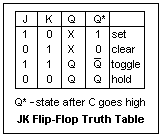POINTS TO REMEMBER
1. Data refers to a set of values which may represent some observation from an experiment ,facts,figures gathered systematically for one or more specific purposes.A data is the single unit of values of certain type that have meaning to its user.
2. A file is collection of related records. A record is a collection of related files.A field holds a particular kind of data.
3. Each entity has certain properties also known as its attributes that describes it.Entity set is a collection of entities of same type that share the same properties or attributes.
4. The key which is chosen to uniquely identify a record is called primary key and other key(s) are known as alternate key(s).
5. Information is defined as the processed summarized or organized data which when used by its recipient helps in taking decisions.
6. Data structure is a logical or mathematical model of a particular arrangement or organization of data.An efficient data structure uses minimum memory space and execution time to process the structure as possible.
7. An array is a finite ordered set of homogeneous elements.In computer memory , array elements are stored in contiguous memory locations. Each element of an array has a fixed and unique index .
8. A linked list is a dynamic data structure containing of nodes where each node is composed of data and a pointer to the next node.
9. A stack is a linear data structure in which all insertions and deletions are restricted only at one end called the top of the stack.A stack is often described as LIFO(Last In First Out).For example stack of coins are above the other. The basic operation performed on stack are 'Push' and 'Pop'.
10.Traversing , searching , insertion, deletion , sorting , merging , copying , concatenation are key operations performed on a data structure.
11. (a)An algorithm is a sequence of steps or instructions required to solve a given problem.(b)The analysis of algorithm is based on how much memory an algorithm needs to solve a particular problem is called the space complexity of an algorithm.(c)Measure of time complexity of an algorithm where we disregard certain terms of a function to express the efficiency of algorithm is called asymptotic complexity.
12. A tree is a multilevel data structure that represents a hierarchical relationship between finite set of individual elements called nodes.
13. A graph is a non linear data structure that consists of set of nodes (or vertices ) and set of edges , with each edge going from one node to another .Each edge in the graph depicts a relationship between pair of nodes.
1. Data refers to a set of values which may represent some observation from an experiment ,facts,figures gathered systematically for one or more specific purposes.A data is the single unit of values of certain type that have meaning to its user.
2. A file is collection of related records. A record is a collection of related files.A field holds a particular kind of data.
3. Each entity has certain properties also known as its attributes that describes it.Entity set is a collection of entities of same type that share the same properties or attributes.
4. The key which is chosen to uniquely identify a record is called primary key and other key(s) are known as alternate key(s).
5. Information is defined as the processed summarized or organized data which when used by its recipient helps in taking decisions.
6. Data structure is a logical or mathematical model of a particular arrangement or organization of data.An efficient data structure uses minimum memory space and execution time to process the structure as possible.
7. An array is a finite ordered set of homogeneous elements.In computer memory , array elements are stored in contiguous memory locations. Each element of an array has a fixed and unique index .
8. A linked list is a dynamic data structure containing of nodes where each node is composed of data and a pointer to the next node.
9. A stack is a linear data structure in which all insertions and deletions are restricted only at one end called the top of the stack.A stack is often described as LIFO(Last In First Out).For example stack of coins are above the other. The basic operation performed on stack are 'Push' and 'Pop'.
10.Traversing , searching , insertion, deletion , sorting , merging , copying , concatenation are key operations performed on a data structure.
11. (a)An algorithm is a sequence of steps or instructions required to solve a given problem.(b)The analysis of algorithm is based on how much memory an algorithm needs to solve a particular problem is called the space complexity of an algorithm.(c)Measure of time complexity of an algorithm where we disregard certain terms of a function to express the efficiency of algorithm is called asymptotic complexity.
12. A tree is a multilevel data structure that represents a hierarchical relationship between finite set of individual elements called nodes.
13. A graph is a non linear data structure that consists of set of nodes (or vertices ) and set of edges , with each edge going from one node to another .Each edge in the graph depicts a relationship between pair of nodes.




.png)




